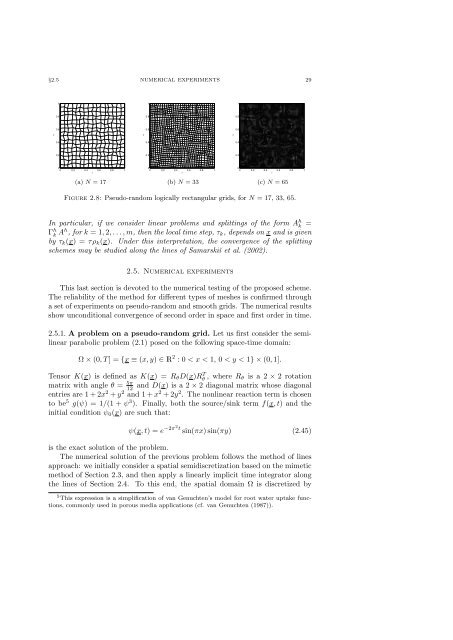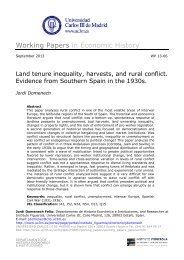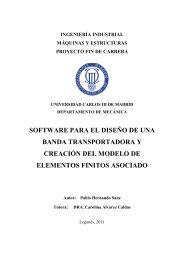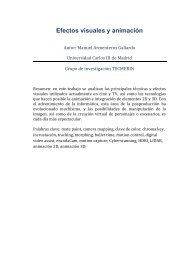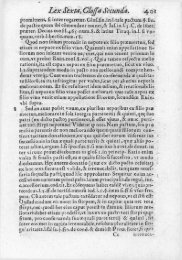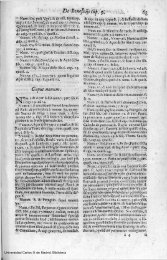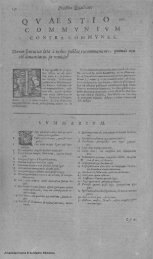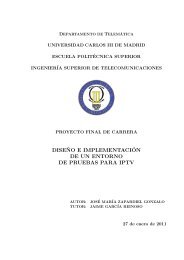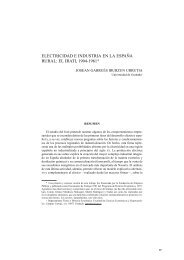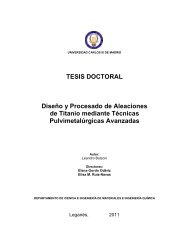Métodos miméticos de pasos fraccionarios - E-Archivo - Universidad ...
Métodos miméticos de pasos fraccionarios - E-Archivo - Universidad ...
Métodos miméticos de pasos fraccionarios - E-Archivo - Universidad ...
You also want an ePaper? Increase the reach of your titles
YUMPU automatically turns print PDFs into web optimized ePapers that Google loves.
§2.5 numerical experiments 29<br />
y<br />
1<br />
0.8<br />
0.6<br />
0.4<br />
0.2<br />
0<br />
0 0.2 0.4<br />
x<br />
0.6 0.8 1<br />
y<br />
1<br />
0.8<br />
0.6<br />
0.4<br />
0.2<br />
0<br />
0 0.2 0.4<br />
x<br />
0.6 0.8 1<br />
y<br />
1<br />
0.8<br />
0.6<br />
0.4<br />
0.2<br />
0<br />
0 0.2 0.4<br />
x<br />
0.6 0.8 1<br />
(a) N = 17 (b) N = 33 (c) N = 65<br />
Figure 2.8: Pseudo-random logically rectangular grids, for N = 17, 33, 65.<br />
In particular, if we consi<strong>de</strong>r linear problems and splittings of the form A h k =<br />
Γ h k Ah , for k = 1, 2, . . . , m, then the local time step, τk, <strong>de</strong>pends on x and is given<br />
by τk(x) = τρk(x). Un<strong>de</strong>r this interpretation, the convergence of the splitting<br />
schemes may be studied along the lines of Samarskiĭ et al. (2002).<br />
2.5. Numerical experiments<br />
This last section is <strong>de</strong>voted to the numerical testing of the proposed scheme.<br />
The reliability of the method for different types of meshes is confirmed through<br />
a set of experiments on pseudo-random and smooth grids. The numerical results<br />
show unconditional convergence of second or<strong>de</strong>r in space and first or<strong>de</strong>r in time.<br />
2.5.1. A problem on a pseudo-random grid. Let us first consi<strong>de</strong>r the semilinear<br />
parabolic problem (2.1) posed on the following space-time domain:<br />
Ω × (0, T ] = {x ≡ (x, y) ∈ R 2 : 0 < x < 1, 0 < y < 1} × (0, 1].<br />
Tensor K(x) is <strong>de</strong>fined as K(x) = RθD(x)RT θ , where Rθ is a 2 × 2 rotation<br />
matrix with angle θ = 5π and D(x) is a 2 × 2 diagonal matrix whose diagonal<br />
12<br />
entries are 1 + 2x2 + y2 and 1 + x2 + 2y2 . The nonlinear reaction term is chosen<br />
to be5 g(ψ) = 1/(1 + ψ3 ). Finally, both the source/sink term f(x, t) and the<br />
initial condition ψ0(x) are such that:<br />
ψ(x, t) = e −2π2 t sin(πx) sin(πy) (2.45)<br />
is the exact solution of the problem.<br />
The numerical solution of the previous problem follows the method of lines<br />
approach: we initially consi<strong>de</strong>r a spatial semidiscretization based on the mimetic<br />
method of Section 2.3, and then apply a linearly implicit time integrator along<br />
the lines of Section 2.4. To this end, the spatial domain Ω is discretized by<br />
5 This expression is a simplification of van Genuchten’s mo<strong>de</strong>l for root water uptake functions,<br />
commonly used in porous media applications (cf. van Genuchten (1987)).


